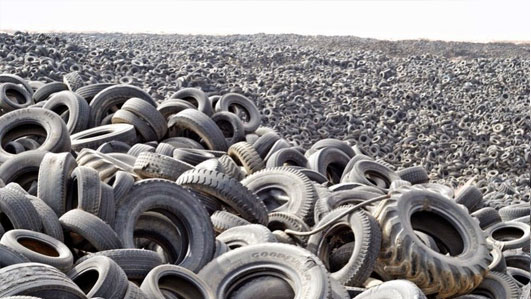As per the Advanced Industrial and Engineering Polymer Research conducted by Kingfa Scientific and Technological Co. Ltd. on July 2021, three-dimensional cross-linked structures formed in rubbers during vulcanization significantly improve the performance properties of rubber goods. Simultaneously, cross-linked rubbers are non-biodegradable and cannot be easily reprocessed, such like thermoplastics. Above mentioned features of rubber goods cause serious difficulties with management and recycling of post-production and post-consumer waste rubbers.
European Tyre and Rubber Manufacturers’ Association (ETRMA) estimated that around 65% of the general rubber goods production is dedicated for automotive (e.g. tires, wiper blades, seals, hoses seatbelts, gaskets, insulators, etc.). Gerrard and Kandlikar performed comprehensive analysis of materials used in a passenger vehicles and showed that tires are 3.5 %wt., while the other rubber goods are 1.6 %wt . This indicates that the mainstream of waste rubbers are end-of-life tires. The estimated data showed that globally in each year, approximately 1000 million tires are not suitable for further use or retreading. According to predictions, up to 2030 the number of waste tires generated to the environment will increase to 1200 million tires/per year. Assuming that the predicted data are correct and development of rubber recycling will held the current relatively low level, this means increase by 20% within next 10 years.
Increasing number of waste tires are serious threat to the natural environment and human health. Illegally dumped or stockpiled waste tires are potential risk of uncontrolled combustion.
For example, in 2016 around 9000 people were evacuated from their homes located in Seseña near to Madrid (Spain) due to the combustion of the biggest illegal waste tire dump in European Union (EU). Estimation showed that around 70–90 thousand tons of tires were accumulated in Seseña for more than 15 years.
Fire in rubber recycling plants also occur, but fortunately in lower scale. For example, in 2020: fire of around 1 ton of rubber granulate in Vinderen Sp. z o.o. (Rubtiler) in Owadowie, Sławno, Poland (technical rubber goods producer) or fire of 1000 L fuel tank in Elan Recycling Plant Welshpool, Perth, Australia (producer of pyrolysis products – carbon black, light oil, steel).
Fire of waste tire rubber resulted in emissions of sulfur oxides, polycyclic aromatic hydrocarbons, fine particulates and other hazardous compounds. As a consequence, risk of cancer is higher for population living near to illegal waste tire dumps and also selected recycling rubber plants, especially those based on prototype lines without strong basics in studies conducted at laboratory scale.

